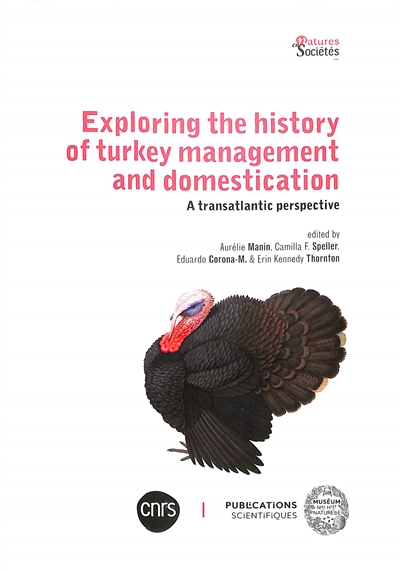en savoir plus

Permet à tous ses détenteurs d'obtenir 5% de réduction sur tous les livres lors du retrait en magasin (réduction non cumulable avec les réductions de type étudiant).
Offre également un certain nombre d'avantages auprès de nos partenaires.
Avec les favoris, retrouvez dans un espace les sélections effectuées au fur et à mesure de vos navigations dans le site.
Constituez pour votre usage personnel vos listes de livres en prévisions d'achats futurs et votre sélection d'articles, dossiers, événements, vidéos ou podcasts préférés ou à découvrir plus tard...
Il suffit simplement de cliquer sur "Ajout Favori" sur chaque page qui vous intéresse pour les retrouver ensuite dans votre espace personnel.
Requiert un compte Mollat
Requiert un compte Mollat
Exploring the history of turkey management and domestication : a transatlantic perspective
en savoir plus
Résumé
Une étude historique sur la domestication et la gestion des dindes domestiques à travers les Etats-Unis, l'Europe ou encore le Sud de l'Amérique centrale. Les contributeurs évoquent le système économique, l'expansion des élevages, les symboles culturels de l'animal, entre autres. ©Electre 2025
Quatrième de couverture
Exploring the history of turkey management and domestication
A transatlantic perspective
The turkey (Meleagris gallopavo) is an iconic bird, widely associated with festive dishes in Europe, North America, and Central America, and extensively raised worldwide. Yet, its long-term interactions with human societies remain poorly synthesized, with significant regional imbalances in research. The role of turkeys in North America has been extensively studied, while their post-colonial dispersal and evolving cultural significance globally have received far less attention.
This volume brings together specialists to explore the paleontology of Meleagris, the early stages of turkey management and domestication in North America, and its subsequent global expansion. Following a chronological structure, the first part examines turkey-human interactions in the Americas before European contact (~500 years ago), with chapters on well-studied regions (Southwestern USA, Northern Mexico, and Mesoamerica) alongside lesser-known areas (Southern Central America and Eastern USA). The second part traces the last 500 years of turkey history, exploring artistic depictions, historical accounts, and archaeozoological evidence from multiple European countries, spanning Western Europe to the Baltic and Central Europe. It also examines the global spread of domestic turkeys, their reintroduction to the Americas through the colonial economy, and their further dispersal across the Pacific.
Blending comprehensive syntheses with original case studies, this volume offers new insights into the history of turkey management, domestication, and cultural symbolism through to the 21st century.
Fiche Technique
Paru le : 26/06/2025
Thématique : Biologie
Auteur(s) : Non précisé.
Éditeur(s) :
Publications scientifiques du Muséum
Ed. du CNRS
Collection(s) : Natures en sociétés
Contributeur(s) : Directeur de publication : Aurélie Manin - Directeur de publication : Camilla F. Speller - Directeur de publication : Eduardo Corona M. - Directeur de publication : Erin Kennedy Thornton
Série(s) : Non précisé.
ISBN : 978-2-38327-026-3
EAN13 : 9782383270263
Reliure : Broché
Pages : 406
Hauteur: 24.0 cm / Largeur 17.0 cm
Épaisseur: 2.2 cm
Poids: 745 g

